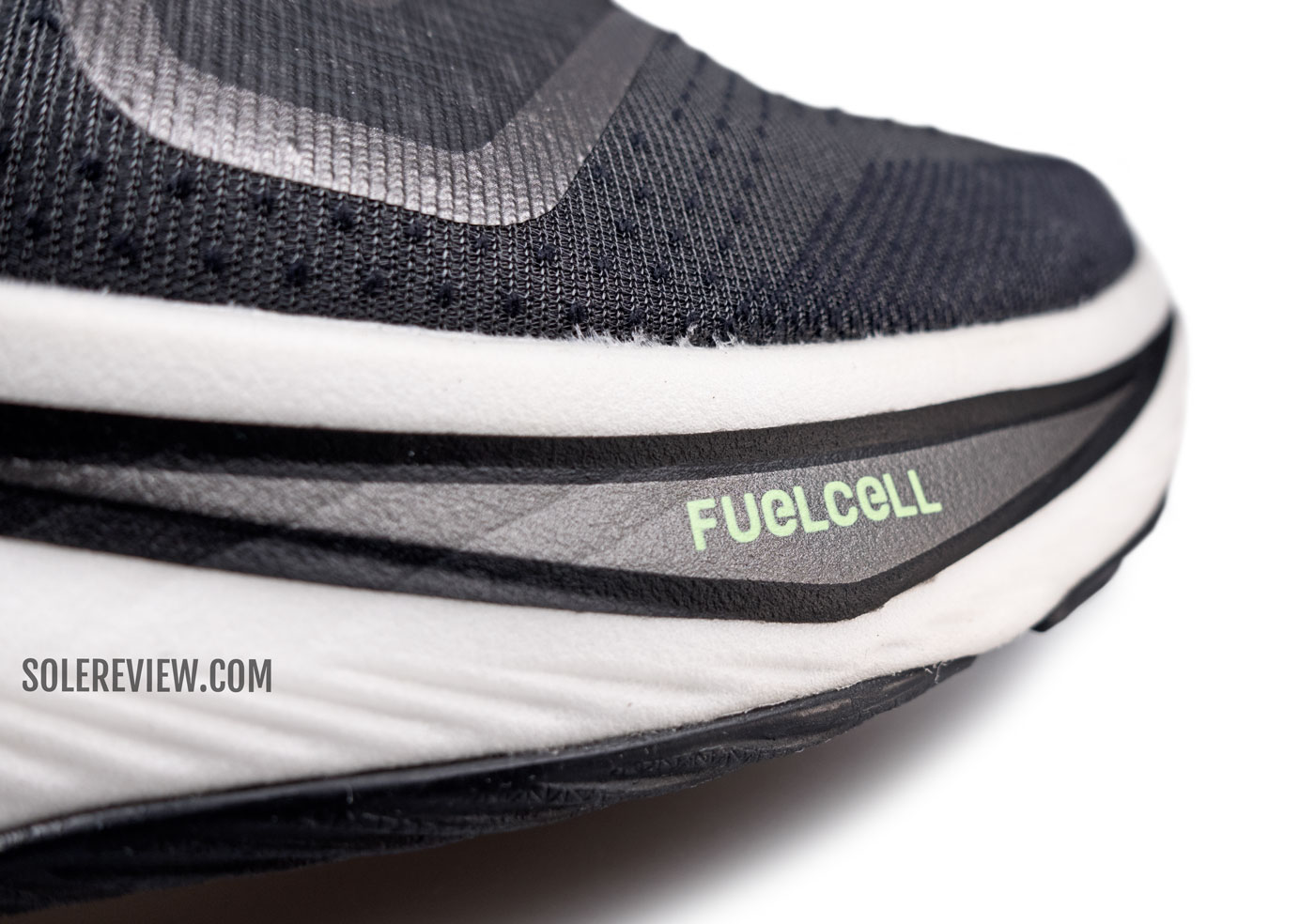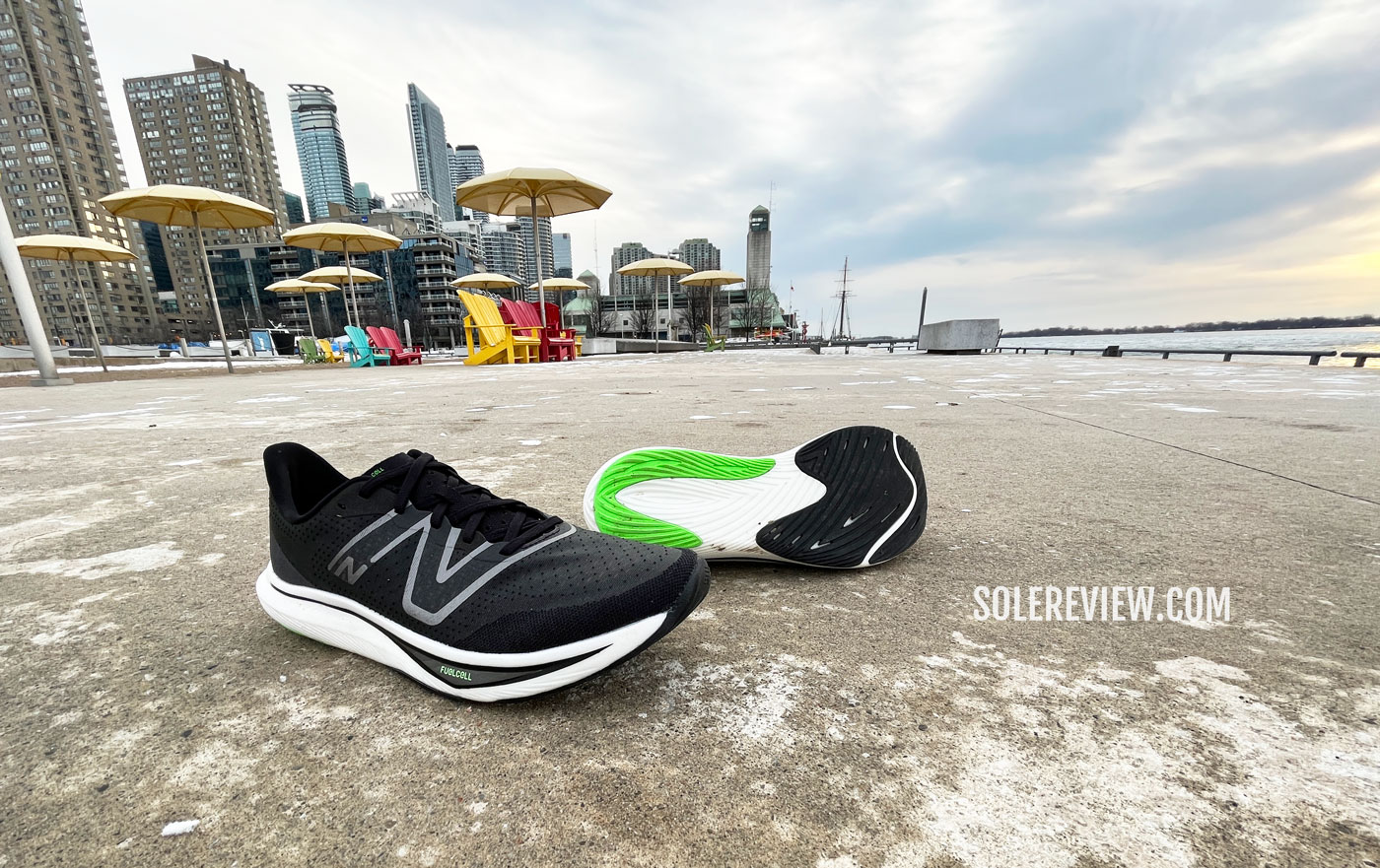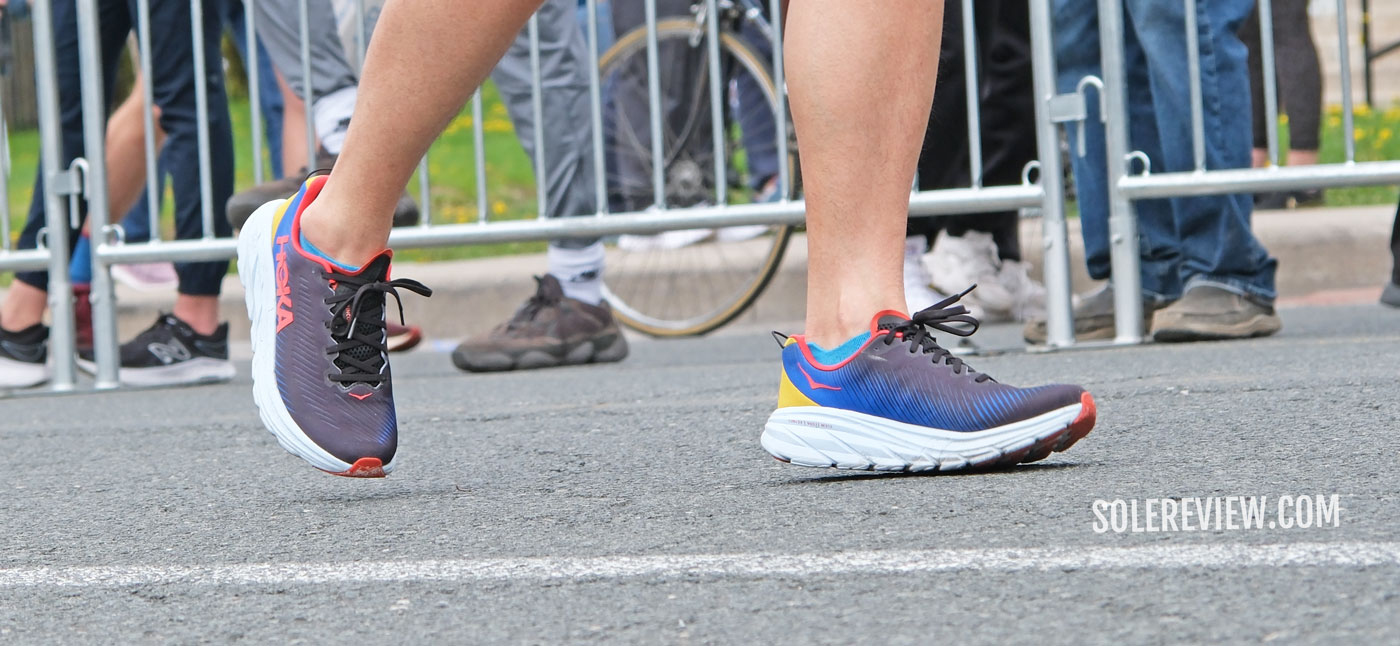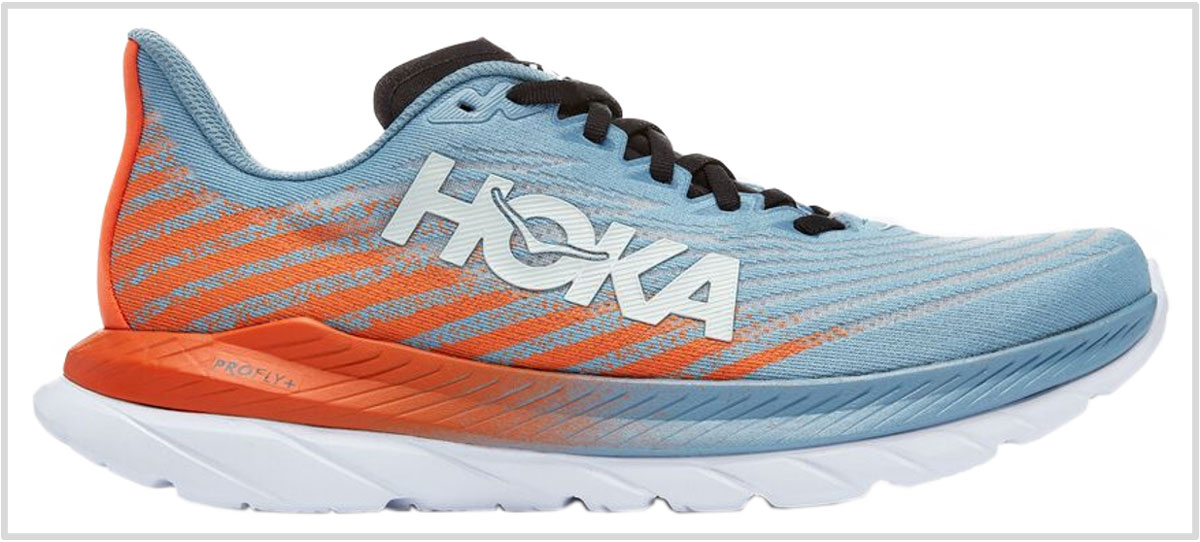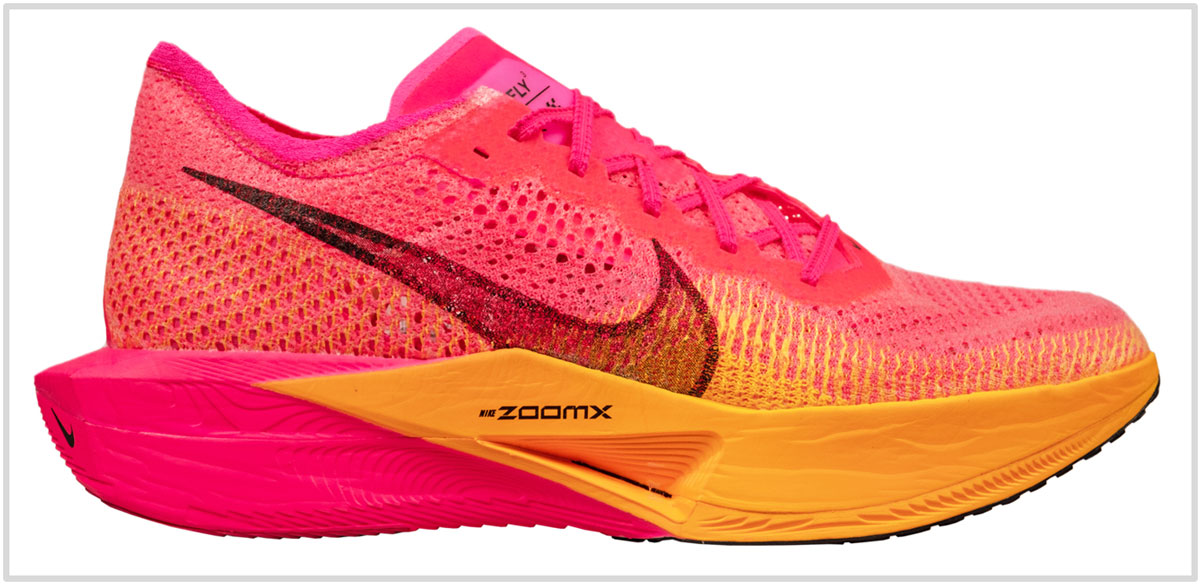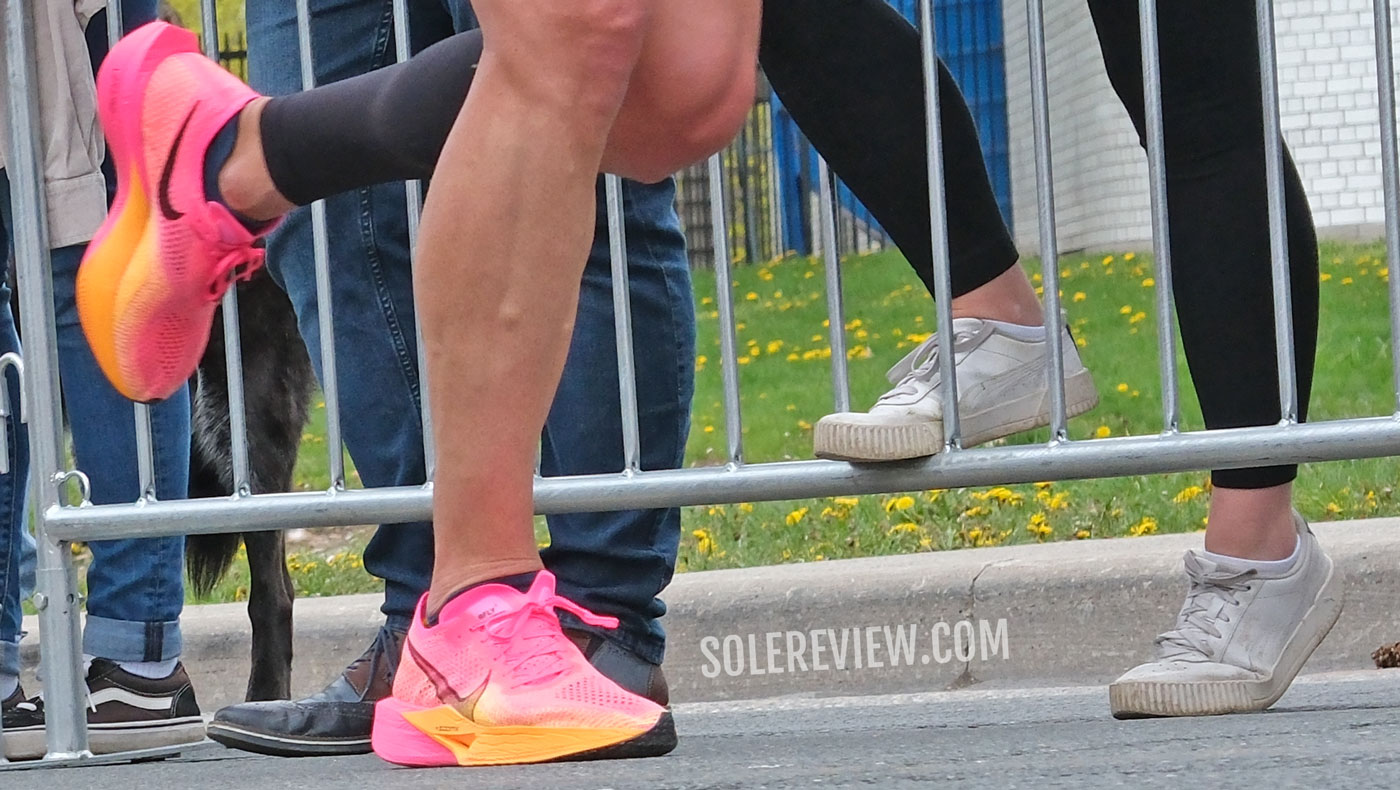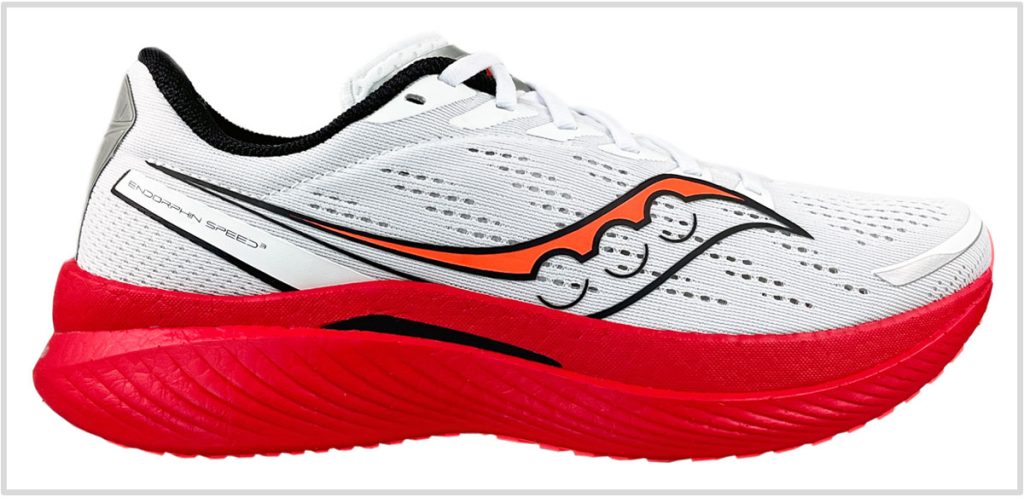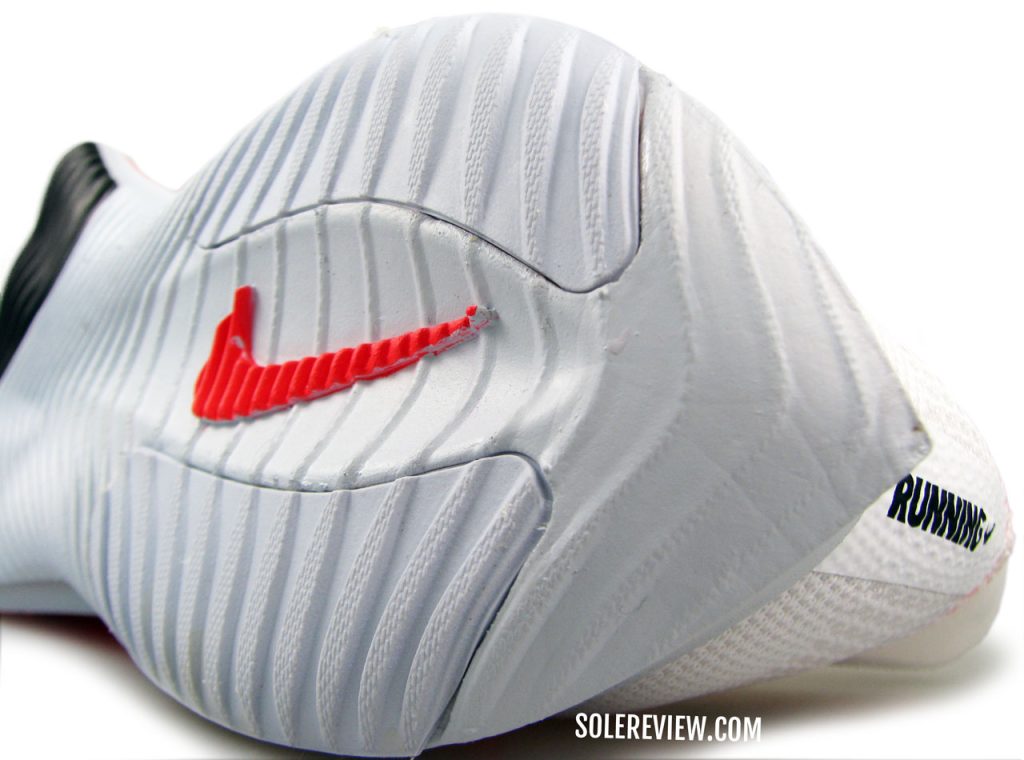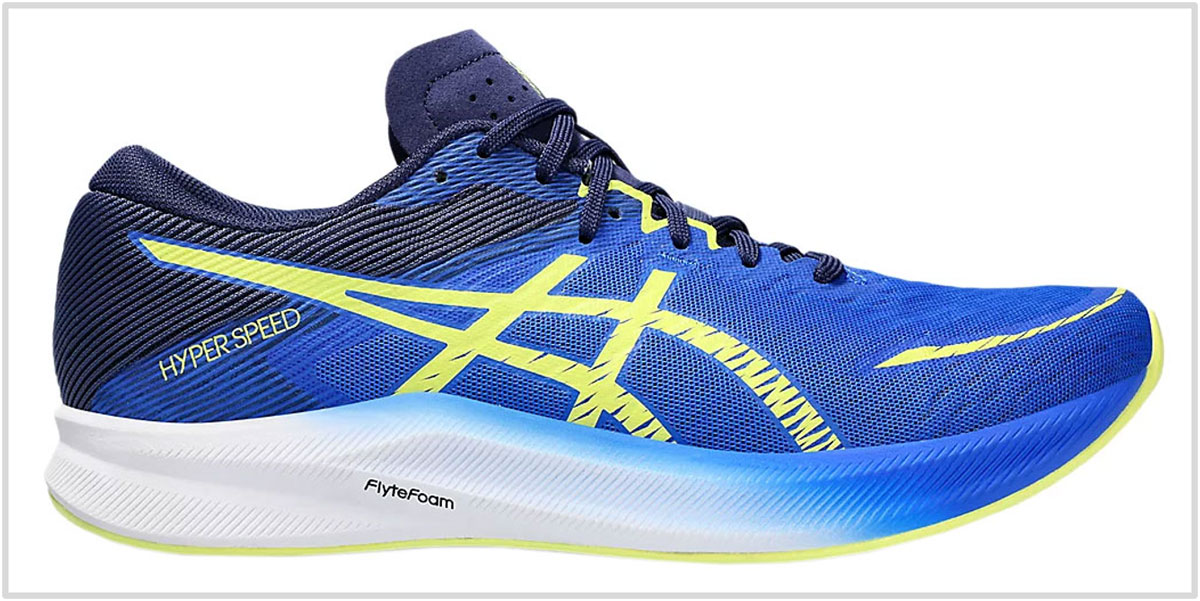This article has been updated with current models for January 2024. The Saucony Kinvara 14 has been removed.
In this product guide:
- 1. Factors to consider
- 2. Lightest everyday trainer: New Balance Fuelcell Rebel V3
- 3. Lightweight everyday trainer: Hoka Rincon 3
- 4. Lightweight everyday trainer: Hoka Mach 5
- 5. Lightweight marathon racer: Nike Vaporfly 3
- 6. Lightweight marathon racer: Saucony Endorphin Speed 3
- 7. Lightweight speed trainer: Nike ZoomX Streakfly
- 8. Lightweight speed trainer: Brooks Hyperion
- 9. Lightweight speed trainer: Asics Hyper Speed 3
- 10. Lightweight trail runner: Brooks Catamount 2
- 11. Lightweight trail runner: Hoka Tecton X2
The easiest way to write this guide would be to compile a list of lightweight running shoes with their weights sorted in ascending order.
But that would be a completely pointless exercise, because that list would be full of impractical racing flats. A more effective approach is to group the shoes by use cases – in the same way how most of our guides are structured.
If this piece was written a decade ago, most lightweight shoes would have featured injection-molded EVA midsoles with a token placement of outsole rubber.
Back then, running shoes had to conform to a strict weight budget – cuts made in one place had to be compensated elsewhere. Design and material cutbacks usually meant a compromise in performance or durability.
Those constraints do not apply to modern running shoes. Contemporary lightweight running shoes routinely match – and sometimes exceed – the median lifespan.
While midsole foam materials have vastly improved, a lightweight build is also a result of the upper and outsole. Single-piece engineered mesh uppers help reduce weight, as do thinner outsoles.
Thick outsoles made of superior rubber or flexible geometry are still the most durable kind. At the same time, brands use a combination of improved compounds and clever engineering to reduce weight without sacrificing durability.
For example, the Saucony Endorphin Speed V3 relies on thin, perforated lugs that flex together with the Pebax midsole. The Kinvara 14 has tiny rubber lugs over what is otherwise an all-foam outsole.
Not long ago, 12 – 13 ounces was the acceptable weight range (refer to our 2011-2012 reviews) for a running shoe. Today, a shoe is deemed heavy if it exceeds 10 ounces.
In nearly all situations, a lighter running shoe is always better. Runners love the NB Fuelcell Rebel or Brooks Hyperion Tempo not just because they’re cushioned and versatile, but also how light and non-distracting they feel during runs.
Trail running shoes are an exception – removing things like the rock plate, a rugged outsole, and protective upper overlays affects the functionality. There are signs of progress though. Both the Brooks Catamount 2 and Hoka Tecton X2 use lightweight foam compounds for significant weight-related improvements.
As a side note, certain stability shoes cannot function without additional support features. Models like the Brooks Beast 20 or the Saucony Omni 20 have wide midsoles with raised rims and plastic stabilizers. Here, a lighter build will water down the functional proposition.
The bar for the ‘lightest’ tag isn’t the same for every category. It would be unfair to expect a cushioned and mileage-friendly running shoe to weigh the same as a racing flat.
This guide is divided into three categories. The first group contains cushioned running shoes suitable for daily runs to a marathon. All these shoes have a high-volume midsole for long-distance comfort.
The second category has road racers and speed-friendly trainers in them, and the last group has lightweight trail footwear.
Category 1: The lightest everyday trainers
1) Everyday trainer: New Balance Fuelcell Rebel V3
Despite its durability concerns, the Fuelcell Rebel V2 was the sleeper hit of 2021-22. By using the same midsole foam from the RC Elite, it managed to cut down its weight to just 7.2 ounces (204 grams).
And it wasn’t just about the weight. The soft and bouncy Fuelcell midsole made the Rebel extremely comfortable yet peppy enough for tempo runs. The Rebel V2 was the near-perfect 10K running shoe.
The Fuelcell Rebel V3 has reinforced the upper by using a more durable mesh and an inner sleeve.
The secure upper also carries forward some of the things we loved on the Rebel V2, like the soft tongue flap, padded heel collar, and lightweight mesh shell. Our comprehensive review has all the details about the newest Rebel V3.
Though the midsole has been redesigned on the 2023 model, it shares a similar ride character. In other words, this shoe can go fast in comfort.
Weight: 7.4 ounces or 209 grams.
2) Everyday trainer: Hoka One One Rincon 3
There are a few reasons why the Rincon 3 weighs less than 8 ounces. This shoe sticks to the original Hoka template by minimizing the use of outsole rubber and leaving most of the cushioning to the EVA foam midsole.
There’s not a lot of layering on the upper either. A single-piece, mono-layer mesh forms the outer shell to create a secure and smooth fit. The tongue and heel are lightly quilted to make things comfortable in the back.
The Rincon 3 is a great example of a mileage-friendly shoe that is also lightweight. It doesn’t cost as much as other maximal Hoka models, so that’s a bonus.
Hoka has updated the Rincon 3’s upper and midsole, but the overall shoe shares a similar character as the V2.
There are some changes, though. The upper now has a racer-like tongue flap (the V2 had a padded tongue), and the mesh has larger in-built vents.
Weight: 7.7 ounces or 218 grams.
3) Everyday trainer: Hoka Mach 5
Despite the word ‘Mach’ in this shoe’s name, the Hoka Mach 5 is much more than just a speed shoe.
At 8.2 ounces, it weighs more than the Rincon, and even has a higher volume midsole.
The dual-density midsole also makes the ride quality more nuanced and fun. On top is a softer foam material that Hoka calls Profly+, and the base is a more supportive EVA foam layer that also doubles as the outsole. For comparison’s sake, the Mach 5 runs slightly softer than the Mach 4.
The absence of rubber lugs on the outsole keeps the weight low, as does the lightweight mesh upper that edits all the necessary trims. The snug-fitting upper (there’s an optional wide just in case) has a padded heel, but the tongue is a flat racer kind to reduce the bulk.
Weight: 8.2 ounces or 232 grams.
Category 2: The lightest marathon racers
4) Marathon racer: Nike Vaporfly 3
This guide wouldn’t be complete without the Nike Vaporfly 3 would it?
Just like the Vaporfly Next% 2, the soft and springy ZoomX foam midsole makes long-distance races less punishing on the feet.
And inside this cushy foam stack is a curved Carbon fiber plate adds delivers the transition-friendly snap. The ZoomX core is protected by front and rear outsole rubber pieces that offer reliable traction. ‘Protection’ is a relative term, as the Vaporfly 3 uses thinner rubber lugs that are less durable than the Vaporfly 2.
The Vaporfly 3 has an incredibly lightweight upper that’s true to size and secure. The deconstructed upper disappears on the foot during a run. That said, we like the Vaporfly 2’s forefoot fit better. The Vaporfly 3’s much looser fit weakens the lockdown and negatively affects the power transfer to the midsole. We explain more in our detailed review.
All of these features are contained within a compact sub-7-ounce form factor.
Weight: 6.5 ounces or 184 grams.
5) Marathon racer: Saucony Endorphin Speed 3
The 3rd edition of Saucony’s popular marathon racer is as lightweight and cushioned as ever.
Powering the soft and comfortable ride is a full-length PEBA foam midsole that Saucony calls Pwrrun PB. The name ‘PB’ is an obvious take on PEBAX foam, but is also a tongue-in-cheek reference for Personal Best.
Because that’s what the Endorphin Speed 3 is good for. The responsive midsole brings long-distance comfort to the table without adding excess weight, and the full-length Nylon adds the springboard-like snap under the heel and a transition-friendly roll to the forefoot.
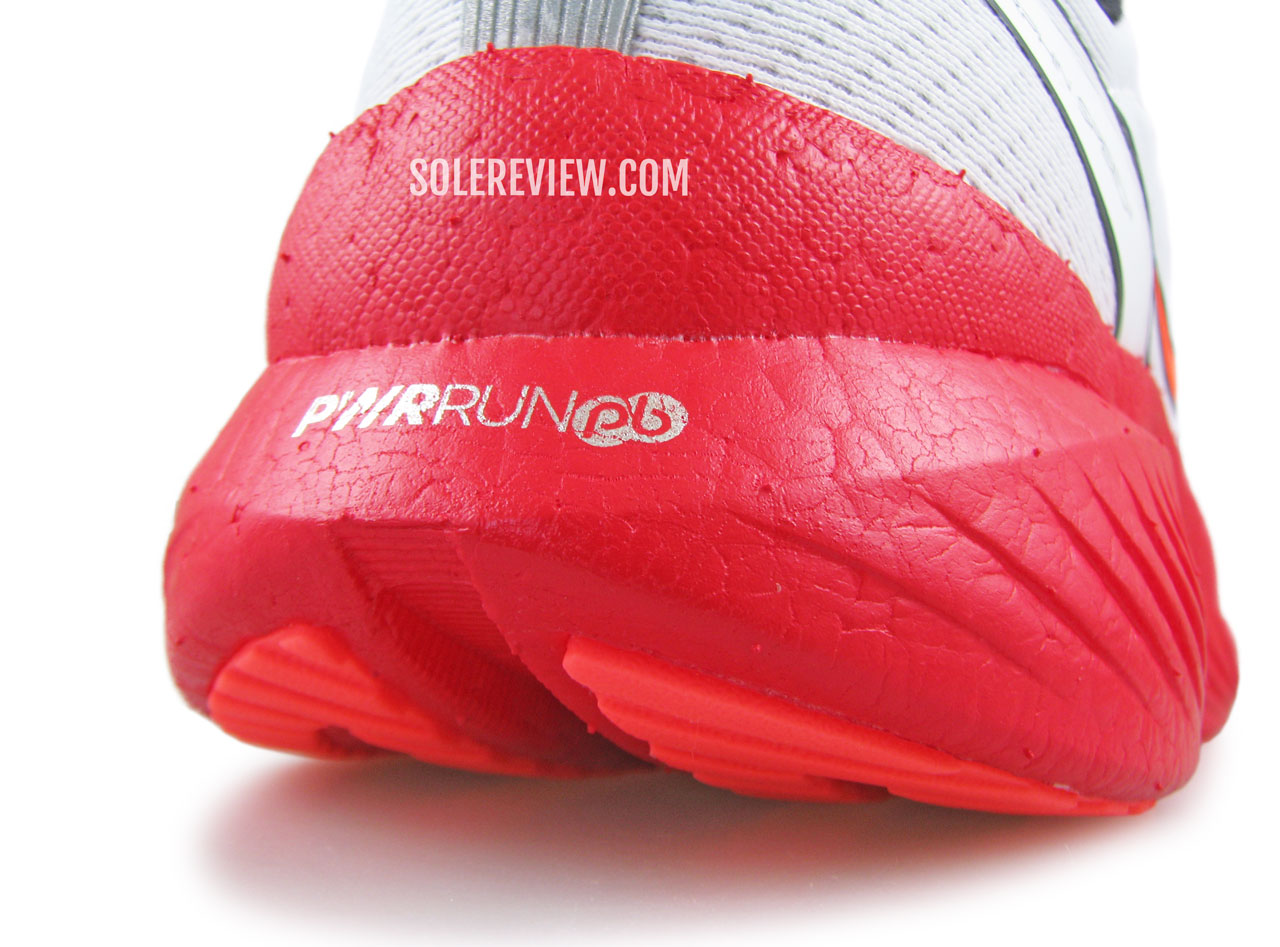

The Saucony Endorphin Speed 3 excels at air circulation.
In short, the Endorphin Speed 3 is an excellent running shoe that delivers an optimal blend of distance-friendly cushioning and tempo character.
The minimally-designed upper does its part in keeping the weight low, but without the trading fit security and comfort. Our in-depth review is here.
All of this is packed into a lightweight 8-ounce package.
Weight: 8.1 ounces or 229 grams.
(Note: The Endorphin Pro 3 is lighter than the Speed 3, but the latter is a more versatile option.)
Category 3: The lightest road racers and fast trainers
6) Speed trainer: Nike ZoomX Streakfly
There are a couple of reasons why Nike’s newest lightweight racer weighs only 6.0-ounces for a half pair of US 9.
Most of the midsole is made of ZoomX – a PEBA foam that also helps the Vaporfly Next% keep its weight low. Even the forefoot outsole of the Streakfly is made of foam, with only the heel getting two thin lugs of hard rubber.
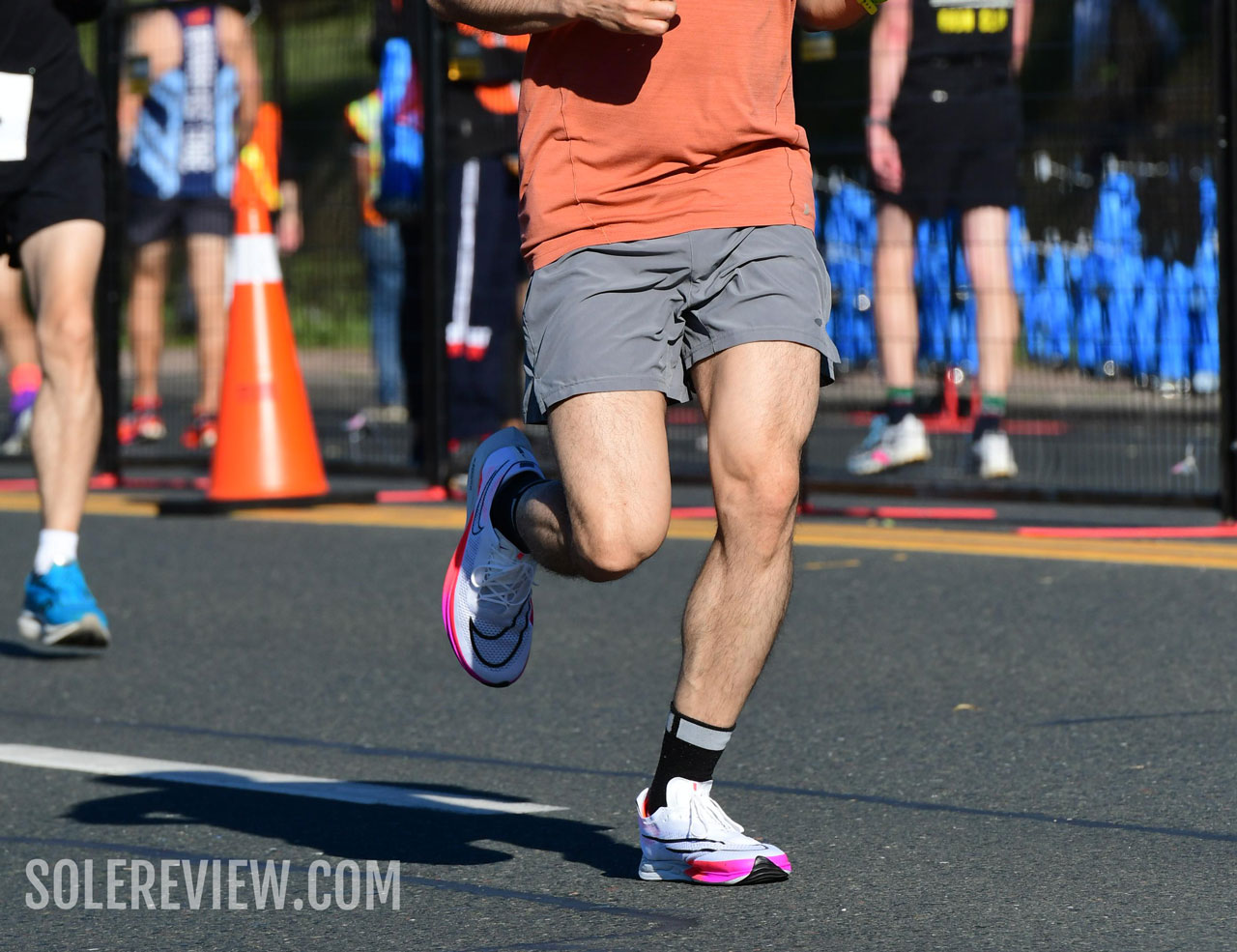
Over the lightweight midsole is a featherweight upper that uses a breathable mesh with no superfluous trims.
The ZoomX Streakfly is an excellent shoe for runs up to a 10K distance. The soft foam stack has sufficient ride comfort for mid-distance runs, whereas the embedded midfoot shank maintains transition efficiency. It’s not perfect, though – our detailed review explains why.
Weight: 6.0 ounces or 170 grams.
Also see: The New Balance SC Pacer – a lightweight (7.1-ounces) yet soft racing shoe with a Carbon transition plate. Or the Saucony Sinister – an ultralight racing flat that’s similar to the discontinued Reebok Run Fast Pro.
7) Speed trainer: Brooks Hyperion
The lightweight DNA Flash midsole was the secret ingredient of the Brooks Hyperion Tempo, so it also makes the latest Brooks Hyperion just as good.
The lightweight 8-mm drop midsole plays a huge role in keeping the weight down. The ‘DNA Flash’ foam is akin to Skechers’ HyperBurst, so the ride quality is similar. The firm cushioning is friendly for long-distance and tempo runs alike.
The comfortable upper sticks to the basics. Interior plushness is all but absent, with foam padding and superfluous overlays kept to a bare minimum.
The Hyperion is similar to the Hyperion Tempo, so most of what we said about the ride experience will also apply to this shoe. We just prefer the outsole grip of the Hyperion Tempo, that’s all. On the bright side, the Brooks Hyperion shaves $10 off its price over the previous version.
Weight: 7.6 ounces or 215 grams.
8) Speed trainer: Asics Hyper Speed 3
We reviewed the original Asics Hyper Speed a few years ago, and it had many things going for it. It was a $90 no-frills speed trainer/racer that offered excellent value for money; its low-profile midsole was just right for high-speed runs yet comfortable enough for up to a 10K. The upper was very well put together for the price.
The Asics Hyper Speed 3 retains most of what made the original model so good. A full-length Flytefoam midsole makes training runs and races quick, yet comfortable for mid-distances.
The snug upper and high lacing density work together to keep the foot locked in. The padded heel and soft tongue flap adds comfort in the right places; the thin mesh upper keeps the feet ventilated during high-intensity training.
Weight: 6.8 ounces or 192 grams.
Category 3: The lightest trail running shoes
9) Trail runner: Brooks Catamount 2
Cushioning tech from road running footwear eventually makes its way into trail shoes. As a result, outdoor running shoes are getting lighter. The Brooks Catamount and Nike Ultrafly Trail are good examples.
The Brooks Catamount 2 uses the same midsole tech as the Brooks Hyperion, so the hyper-lightweight DNA Flash (Nitrogen-infused EVA foam) allows the Catamount to be cushioned yet versatile.
The shoe weighs just under 10 ounces, and that’s very respectable for a product that has a trail-worthy outsole and rock plate. The aggressive lugs made from the sticky rubber (TrailTack) compound deliver a sufficient bite, whereas the plate protects the foot from the pointy rocks and roots.
We’ve heaped praise on the Hyperion Tempo’s cushioning, and the same material equips the Catamount with supportive cushioning for the trails.
The firm ride of the 6mm offset midsole has inherent stability for off-road runs with sufficient comfort for high-mileage trail runs. From a stability viewpoint, the raised midsole edges of the Catamount 2 are an improvement over the Catamount 1’s design.
The upper keeps the weight low by applying protective urethane films over a mesh exterior. The partial sleeve helps keep the debris out and secures the midfoot.
Weight: 9.7 ounces or 275 grams.
10) Trail runner: Hoka Tecton X2
The Tecton X2 isn’t Hoka’s lightest trail running shoe; the Zinal 2 is. However, while the Zinal 2’s ultra-minimal construction works wonders for short speed runs and proprioceptive feedback, the trade-off is protection.
So that leaves us with the Tecton X2. A good way to describe this shoe is that it’s similar to the Hoka Mach 5, except that this is an outdoor shoe which also has a midsole plate. At 8.8 ounces, the dual-density midsole is as lightweight as it gets for a trail shoe.
The two-piece Vibram outsole gives the Tecton X2 a good range of movement while providing the protection and traction for off-road terrain. Just like the Hoka Mach 5, the Tecton X2 is much more than just a shoe for fast off-road runs.
If you want to increase the speed, the internal plate and lightweight midsole help. And if you just want to take it slow and easy, the cushioned midsole and secure upper keep the foot supported on the trail.
Weight: 8.8 ounces or 249 grams.
Do you own any of these shoes? Improve this review by sharing your insights – submit a review here.





